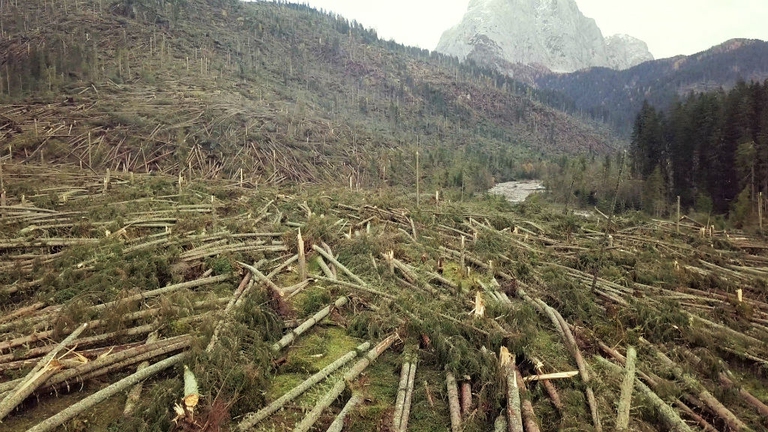https://www.lifegate.it/tempesta-vaia-6-anni
- |
Between 26 and 30 October 2018 the Vaia storm has taken away the equivalent of from the woods of the Triveneto 7 years of cutting trees in Italy.On the night of October 29, when gusts coming from an unusually warm Adriatic Sea hurled themselves against the mountainsides at a speed of 200 kilometers per hour, the face of these valleys changed forever.Beyond 40 million trees were knocked down by gusts of wind, leaving a deep wound in an area where wood is nature, landscape and cultural identity.

Reforestation efforts
They have passed six years from that storm and today the affected territories are trying to get back on their feet not only from an environmental point of view, but also from that linked to the wood economy.The sudden availability of wood following Vaia, in fact, had put the sector under pressure, both due to the excessive quantity of raw material and the limited capacity of the supply chain to dispose of similar numbers.The increase in supply then caused a collapse in prices, estimated at 174 million euros.
The local regeneration projects that have arisen over the years have focused on naturalistic forestry, that is, by inserting different species to allow the forest to recover its natural dynamics.A choice that made the areas affected by the storm a real open-air laboratory.The objective is to recreate forest structures capable of resisting disturbances and changed climatic conditions.Woods and forests where ample space is given to biodiversity, to the diversity of species, to a vision of the forest to be managed responsibly.
Similar projects have also had to deal with the bark beetle printer (Ips typographus), an insect that has infected plants uprooted and crowded together by gusts of wind, finding fertile ground to spread much more rapidly.The insect is naturally present in forest ecosystems and under normal conditions plays an important ecological role, attacking plants such as silver firs, larches and Scots pines when they are weak or have reached the end of their life cycle.The succession of extremely dry periods However, it favored the bark beetle's "jump" towards healthy woods, effectively multiplying the initial destructive effect of the storm.

Vaia, from the storm to the community that brings wood back to life
In addition to the numerous initiatives of reforestation born following the storm, there are then reality like Vaia, which works precisely with a view to regeneration of local communities, working one-on-one with local artisans.For Federico Stefani, co-founder of the project, "one of the pillars of Vaia's philosophy is the concept of recovery of raw materials with which new products are created, suitable for everyday life and in symbiosis with commonly used technology".
If originally the wood used was that of the trees felled by the storm, today the attention is paid to fir wood hit by the bark beetle, which is worked by the hands of the artisans of Val Brembilla, in Lombardy.For each object sold then, in a clear perspective of circular economy, Vaia plants a tree in the areas affected by the same bark beetle throughout the Alps between Lombardy, Veneto, Trentino-Alto Adige and Friuli Venezia Giulia.With the planting of trees of different species to guarantee biodiversity. To date, around 100,000 trees have been planted, but the goal is to double the number within the next two years.
